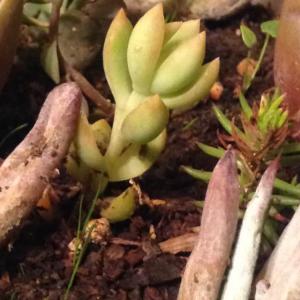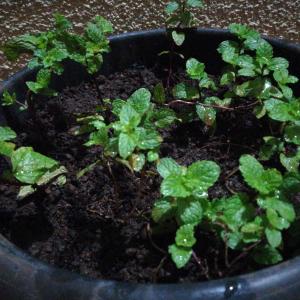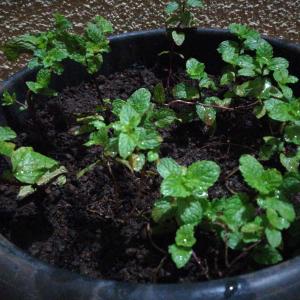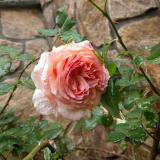文章
Miss Chen
2017年09月29日

Tulips grow and bloom in late winter and early spring, bringing bright color to otherwise sleepy gardens. These bulb plants are equally successful in pots, both in the house and in the garden. Potted tulips require the same planting times, placement and care as outdoor tulips if they're to bloom in spring, so buy some tulips bulbs in fall and get started.

Step 1
Plant tulip bulbs in fall, around the first frost date in your area. All tulips require a cold "resting" time in fall in order to bloom. Use pots at least 6 inches deep with drainage holes for tulips, to accommodate their roots and keep them from sitting in water.
Step 2
Fill the pots halfway with quick-draining potting soil, and set the tulip bulbs on the soil with their noses pointing up. Plant tulip bulbs closely, but never place them close enough to touch each other. Fill the pots to within 1 inch of the surface with more potting soil.
Step 3
Water the tulips until water runs out of the drainage hole in the pot, then set them outside for the winter.

Step 4
Move tulips indoors again when their stems are 1 inch long. Put the pots in a cool, dark space and give them several weeks to grow. Move the tulips back into a sunny spot when their stems are 4 to 5 inches long.
Step 5
Water sprouted tulips with 2 inches of water a week to maintain consistent soil moisture, and keep them in full sun for six to eight hours a day.

Step 1
Plant tulip bulbs in fall, around the first frost date in your area. All tulips require a cold "resting" time in fall in order to bloom. Use pots at least 6 inches deep with drainage holes for tulips, to accommodate their roots and keep them from sitting in water.
Step 2
Fill the pots halfway with quick-draining potting soil, and set the tulip bulbs on the soil with their noses pointing up. Plant tulip bulbs closely, but never place them close enough to touch each other. Fill the pots to within 1 inch of the surface with more potting soil.
Step 3
Water the tulips until water runs out of the drainage hole in the pot, then set them outside for the winter.

Step 4
Move tulips indoors again when their stems are 1 inch long. Put the pots in a cool, dark space and give them several weeks to grow. Move the tulips back into a sunny spot when their stems are 4 to 5 inches long.
Step 5
Water sprouted tulips with 2 inches of water a week to maintain consistent soil moisture, and keep them in full sun for six to eight hours a day.
0
0
文章
Miss Chen
2017年09月29日

Nothing says spring quite like tulips blooming in your garden. While these pretty flowers add beautiful splashes of color to your landscaping, they can be hazardous to any dogs living in your home, especially if your pet treats your garden like a salad bar.

Tulips
Perennials that bloom in the spring, tulips spring forth from planted bulbs. With few leaves, the bloom is the main visual focus of the tulip plant. They come in a wide variety of colors, including yellow, pink, red and violet. Tulips contain compounds called tulipan A and tulipan B. These compounds are found in every part of the plant and are poisonous to animals including cats, horses and dogs.
Symptoms
If your dog eats any part of a tulip, it could experience digestive problems like vomiting and diarrhea. If these problems are serious enough, they can lead to dehydration. Tulip ingestion can also cause hypersalivation, or excessive drooling. This is messy and can also contribute to fluid loss. Eating tulips can also cause depression. Because your dog does not feel well, it might lose interest in food and interacting with you or other members of your household.

Treatment
If you dog eats part of a tulip plant, call your veterinarian. The first thing your veterinarian will probably recommend is watchful waiting. Keep an eye on your dog and make sure it can easily access the outdoors. Give it plenty of clean water to drink. Most cases of gastric upset pass in a day or two. If your dog's symptoms linger or if it loses interest in food and water, bring it to your veterinarian's office. She can help clear the toxic elements from your dog's system as well as provide supportive care like restoring fluids so your dog stays hydrated as it recovers.
Considerations
The most poisonous part of the tulip is the bulb. If your dog likes to dig in your garden, fence off the area where you plant tulip bulbs so it cannot pull them out of the soil and eat them. If you bring tulips into your home, place them on tables or shelves that are high enough to keep them out of your pet's reach. If you do need to take your dog to the veterinarian, bring along a portion of the eaten tulip. It can help her decide how to best treat your dog.

Tulips
Perennials that bloom in the spring, tulips spring forth from planted bulbs. With few leaves, the bloom is the main visual focus of the tulip plant. They come in a wide variety of colors, including yellow, pink, red and violet. Tulips contain compounds called tulipan A and tulipan B. These compounds are found in every part of the plant and are poisonous to animals including cats, horses and dogs.
Symptoms
If your dog eats any part of a tulip, it could experience digestive problems like vomiting and diarrhea. If these problems are serious enough, they can lead to dehydration. Tulip ingestion can also cause hypersalivation, or excessive drooling. This is messy and can also contribute to fluid loss. Eating tulips can also cause depression. Because your dog does not feel well, it might lose interest in food and interacting with you or other members of your household.

Treatment
If you dog eats part of a tulip plant, call your veterinarian. The first thing your veterinarian will probably recommend is watchful waiting. Keep an eye on your dog and make sure it can easily access the outdoors. Give it plenty of clean water to drink. Most cases of gastric upset pass in a day or two. If your dog's symptoms linger or if it loses interest in food and water, bring it to your veterinarian's office. She can help clear the toxic elements from your dog's system as well as provide supportive care like restoring fluids so your dog stays hydrated as it recovers.
Considerations
The most poisonous part of the tulip is the bulb. If your dog likes to dig in your garden, fence off the area where you plant tulip bulbs so it cannot pull them out of the soil and eat them. If you bring tulips into your home, place them on tables or shelves that are high enough to keep them out of your pet's reach. If you do need to take your dog to the veterinarian, bring along a portion of the eaten tulip. It can help her decide how to best treat your dog.
0
0




















